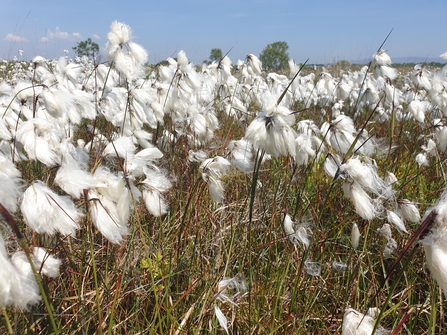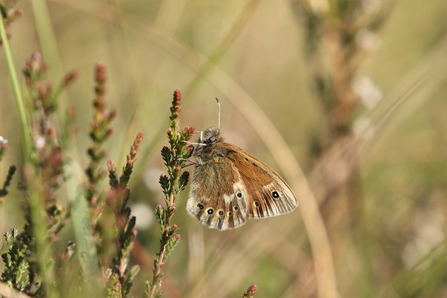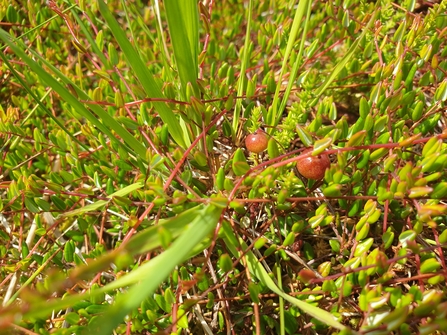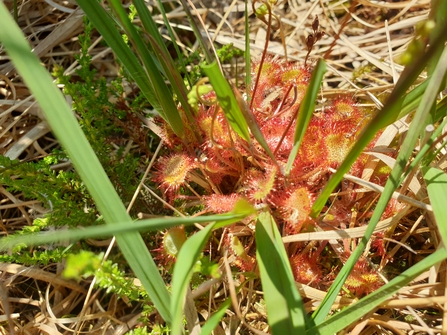On one of the hottest days of the year so far, a group of intrepid explorers (or LWT peat team members) were advancing on Winmarleigh Moss SSSI to undertake a survey of large heath butterflies – a rare little butterfly that is a peatland specialist and once common across our region.
Before even opening the gate onto site, we stopped to watch a glorious brown hare lolloping across a nearby field, taking it’s time in the sunshine. Just the first of the wildlife wonders that were in store...
As we entered the nature reserve the wonderful panorama opened up in front of us. The huge blue sky was speckled with hazy smears of cloud, and the ground below us radiated in different shades of green and burnt umber, with the nodding heads of cotton grass looking like a gentle sprinkling of snow.





